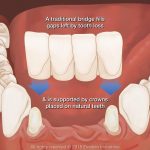
Key facts
- Dyspraxia is a neurological (brain) condition.
- It’s also called developmental coordination disorder (DCD).
- People with dyspraxia have problems learning and doing motor skills.
- Dyspraxia is often identified in early childhood and is a life-long condition.
What is dyspraxia?
Dyspraxia is a neurodevelopmental disorder of movement and coordination in which messages sent from the brain to the muscles are interrupted. It is often identified in early childhood, but can also come on later in life after an illness or acquired brain injury.
It causes problems with tasks such as handwriting or tying shoelaces, or with motor skills like catching or riding a bike.
In childhood, dyspraxia (also known as developmental coordination disorder or DCD) usually refers to a disorder in which children do not develop the motor skills that are expected for their age. While some children outgrow the condition, the majority continue to experience movement difficulty as adolescents and adults. Treatment can help them function better as they grow.
In adults, dyspraxia can come on after a brain injury or stroke, or as a symptom of dementia.
You may hear dyspraxia referred to in different ways. It may be called Childhood Apraxia of Speech (CAS), developmental verbal dyspraxia (DVD), or speech apraxia.
What are the types of dyspraxia?
There are a few different types of dyspraxia:
- Motor dyspraxia — causing problems with skills like writing, dressing or skipping
- Verbal dyspraxia — causing problems with speech
- Oral dyspraxia — causing problems with movements of the mouth and tongue
What are the symptoms of dyspraxia?
Children with dyspraxia usually have motor learning difficulties. Some children with dyspraxia also have other physical or behavioural problems.
Motor dyspraxia involves trouble with coordinating physical movements, for example, walking up or down stairs, kicking balls, or hopping. Children with motor dyspraxia may be able to perform a task at one time, then unable at a later time.
Some signs a child may have dyspraxia include:
- they are awkward or clumsy
- they have difficulty with writing, doing up their buttons or shoelaces, or running and jumping
- they have difficulty learning new skills
- they bump into other people or objects
- they become tired easily
- they avoid tasks they find difficult, such as handwriting
- they have difficulty changing their clothes
- they make a mess when eating
Children with verbal dyspraxia have problems with coordinating their muscle to produce speech sounds and words. They have difficulties in producing clear, fluent speech or saying certain words or sentences. Children with verbal dyspraxia might speak slowly with frequent pauses.
Children with speech dyspraxia may:
- find it hard to make or repeat sounds
- make different mistakes when they say the same word
- have difficulty with intonation — they may speak in a monotone or stress each syllable the same
- have a limited vocabulary and not use many words
- speak more slowly than other children their age
- pause often when speaking
- make searching movements with their lips and tongue when trying to say a sound
What causes dyspraxia?
It is unknown why some children have dyspraxia. There is no single cause. It is thought to be a problem with the way connections develop between some of the nerve pathways in the brain. There may be a genetic component and premature babies seem to be at greater risk.
It can also occur after damage to the brain due to illness, a stroke or an accident.
How is dyspraxia diagnosed?
If you are concerned that your child has dyspraxia, see your doctor for advice and referral to other specialists.
Your child may be referred to, for example:
- speech pathologists for oral and verbal dyspraxia
- occupational therapists for oral and motor dyspraxia
- physiotherapists for motor dyspraxia
Each specialist will use a variety of assessment tools. Your doctor is likely to coordinate the process of assessment and diagnosis.
How is dyspraxia treated?
There is no cure for dyspraxia, but it can be treated and managed with a combination of regular, intensive therapies including:
- speech therapy
- occupational therapy
- physiotherapy



